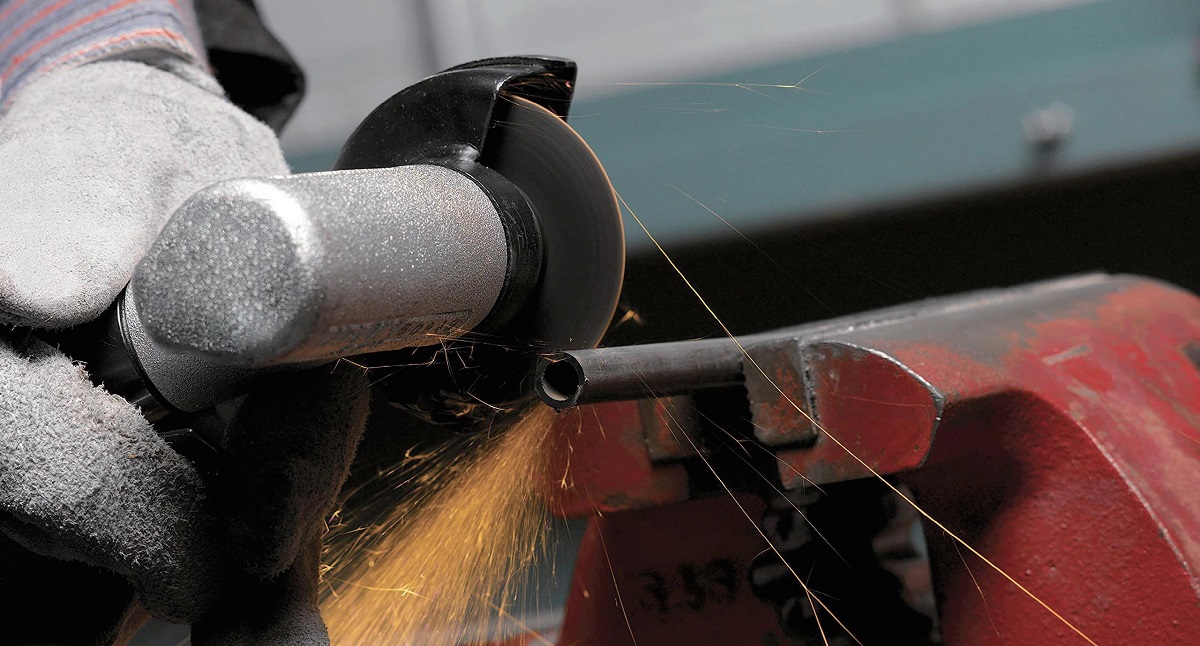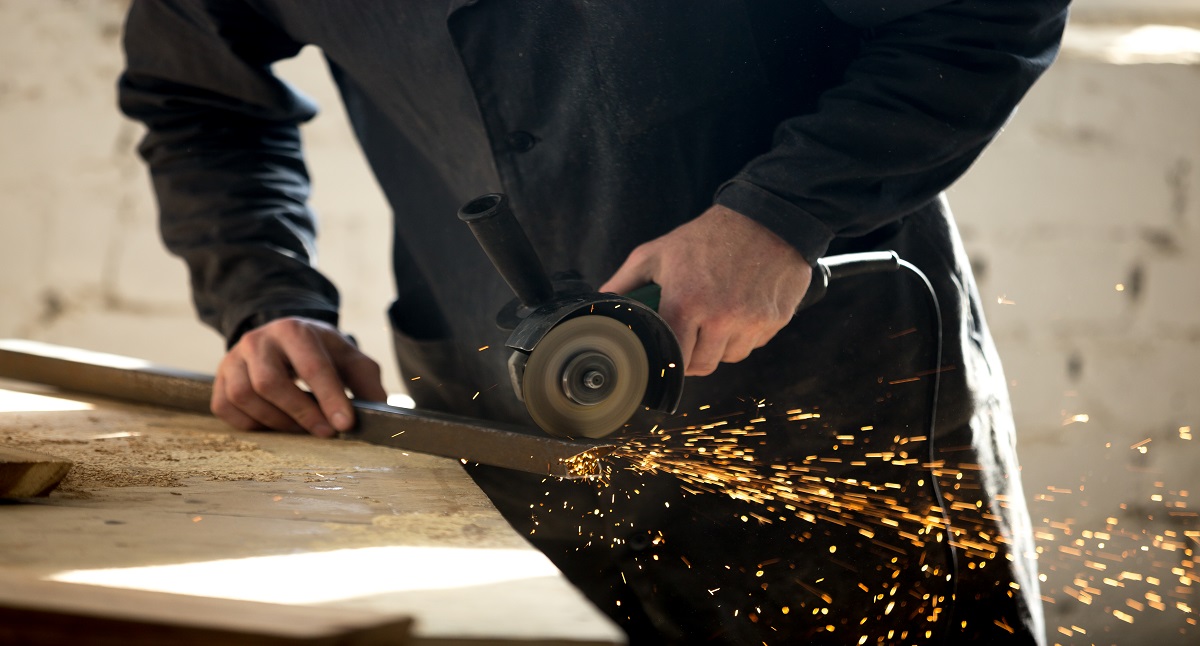In the world of metalworking, fabrication, and general-purpose grinding, the choice between a die grinder and an angle grinder is crucial. Both tools are highly versatile and essential for different applications, but they have distinct differences that make them more suitable for specific tasks. Understanding these differences will help you select the right tool for your project, maximizing efficiency and achieving the best results. This article will provide an in-depth comparison of die grinders and angle grinders, exploring their functions, advantages, disadvantages, and ideal applications.
What is a Die Grinder?
A die grinder is a small, handheld power tool used for precision grinding, sanding, honing, and polishing. Typically powered by compressed air, electric, or sometimes batteries, die grinders are highly versatile and often used in tasks requiring a high level of detail. They are designed to accommodate a wide range of bits and attachments, allowing users to tackle various materials, including metal, wood, and plastic.
Key Features of Die Grinders:
- Size and Portability:Die grinders are compact, lightweight tools that can be easily maneuvered in tight spaces. Their small size makes them ideal for detailed work, especially in hard-to-reach areas.
- Precision:Die grinders are known for their precision. They are often used for tasks requiring fine detail, such as engraving, deburring, or finishing. Their ability to use small, pointed bits allows for intricate work on small surfaces.
- Speed: Die grinders typically operate at very high speeds, often ranging from 20,000 to 30,000 RPM (rotations per minute). This high-speed operation makes them effective for cutting, grinding, and shaping materials quickly.
- Attachments:Die grinders can be fitted with a variety of attachments, including burrs, mounted points, and cut-off wheels like mini cut-off wheels. This versatility makes them suitable for a wide range of applications, from metalworking to woodworking.
Applications of Die Grinders:
- Deburring:Die grinders are commonly used to remove burrs and sharp edges from metal parts, ensuring smooth and safe surfaces.
- Engraving and Detailing: Artists and craftsmen often use die grinders for engraving detailed designs on metal, wood, or other materials.
- Polishing:With the right attachments, die grinders can be used to polish surfaces to a high shine, making them ideal for finishing work.
- Honing: Die grinders are also used in honing operations to improve the surface finish and precision of metal parts.
Advantages of Die Grinders:
- Precision Work:Die grinders excel at tasks that require fine detail and precision, making them ideal for artisans and metalworkers.
- Versatility:The ability to use a wide range of attachments makes die grinders suitable for a variety of tasks, from cutting and grinding to polishing and honing.
- Compact Design: The small size and lightweight nature of die grinders make them easy to handle and perfect for use in confined spaces.
Disadvantages of Die Grinders:
- Limited Power:Compared to angle grinders, die grinders generally have less power, making them less suitable for heavy-duty grinding tasks.
- Overheating: The high speeds at which die grinders operate can lead to overheating if used continuously for long periods.
What is an Angle Grinder?
An angle grinder, also known as a side grinder or disc grinder, is a handheld power tool used for cutting, grinding, and polishing. It is larger and more powerful than a die grinder and is typically used for more heavy-duty applications. Angle grinders are equipped with a rotating abrasive disc or wheel, which can be used to cut through metal, stone, concrete, and other hard materials.
Key Features of Angle Grinders:
- Power and Size: Angle grinders are more powerful than die grinders, making them suitable for heavy-duty tasks. They are available in various sizes, with the most common being 4.5 inches, 5 inches, and 7 inches.
- Versatility: Like die grinders, angle grinders can be used with a wide range of attachments, including grinding discs, cutting discs, and wire brushes. This makes them versatile tools for cutting, grinding, and polishing.
- Durability: Angle grinders are built to handle tough tasks and are often used in construction, metalworking, and other industries where durability is crucial.
- Safety Features:Many angle grinders come with safety features like guards, side handles, and safety switches to protect the user during operation. These features are particularly important given the power and speed at which angle grinders operate.
Applications of Angle Grinders:
- Cutting: Angle grinders are commonly used to cut through metal, stone, tile, and concrete. With the appropriate disc, they can make quick, clean cuts in thick materials.
- Grinding and Smoothing: The grinding function of an angle grinder is one of its primary uses. It can be used to remove excess material, smooth rough edges, or even shape metal and stone.
- Polishing and Sanding:Although not as precise as a die grinder, an angle grinder can be used for polishing and sanding large surfaces. Special polishing pads or sanding discs are attached to the tool for these purposes.
- Surface Preparation: Angle grinders are also used for surface preparation tasks, such as removing rust, paint, or coatings from metal surfaces.
Advantages of Angle Grinders:
- Powerful Performance:Angle grinders are capable of handling demanding tasks, including cutting through hard materials like metal and concrete. Their powerful motors and large discs make them suitable for heavy-duty applications.
- Versatility: The ability to switch between different types of discs makes angle grinders highly versatile tools for various applications, from cutting to grinding to polishing.
- Durability:Built to withstand tough conditions, angle grinders are highly durable and can handle long-term use in demanding environments.
Disadvantages of Angle Grinders:
- Size and Weight:The larger size and weight of angle grinders make them less maneuverable than die grinders, especially in tight spaces or for precision work.
- Less Precision: Due to their power and larger disc size, angle grinders are not as well-suited for detailed or delicate tasks as die grinders are.
- Safety Risks:The power and speed of angle grinders make them potentially dangerous if not used correctly. Proper safety precautions are necessary to avoid injury.
Die Grinders vs. Angle Grinders: Head-to-Head Comparison
Now that we’ve explored the features, applications, advantages, and disadvantages of both die grinders and angle grinders, let’s compare them directly across several key factors.
- Power:
Die Grinders: Generally less powerful, making them ideal for precision work rather than heavy-duty tasks.
Angle Grinders: More powerful, capable of cutting through dense materials like metal and concrete. Suitable for heavy-duty applications.
- Size and Portability:
Die Grinders: Small, lightweight, and easy to maneuver in tight spaces. Ideal for detailed work.
Angle Grinders: Larger and heavier, which can limit maneuverability but is beneficial for tasks requiring more power.
- Versatility:
Die Grinders: Versatile in terms of attachments but best suited for fine detail work and light grinding.
Angle Grinders: Also versatile with a range of attachments but better suited for cutting, heavy grinding, and large-scale polishing.
- Precision:
Die Grinders: Designed for precision and detailed work, making them ideal for intricate tasks.
Angle Grinders: Less precise due to their size and power, but effective for larger, less delicate tasks.
- Speed:
Die Grinders: Operate at very high speeds (20,000-30,000 RPM), making them effective for quick, precise grinding.
Angle Grinders: Operate at lower speeds (typically around 10,000 RPM), but the larger disc size compensates for speed with power.
- Safety:
Die Grinders: Generally safer due to lower power and smaller size, but still requires caution, especially at high speeds.
Angle Grinders: Requires more safety precautions due to higher power, larger discs, and the potential for kickback.
- Cost:
Die Grinders: Typically less expensive, especially pneumatic models. However, the cost can vary based on the brand, power source, and quality.
Angle Grinders: Often more expensive, particularly for high-powered models. The cost can also increase with the addition of various attachments and safety features.
Choosing the Right Tool for the Job
When deciding between a die grinder and an angle grinder, consider the specific requirements of your project. Here’s a guideline to help you choose the right tool:
- Use a Die Grinder If:
- You need to perform detailed or precision work, such as engraving, deburring, or intricate shaping.
- The task requires working in tight or confined spaces where a larger tool would be cumbersome.
- You’re working with smaller materials or surfaces that require a delicate touch.
- Use an Angle Grinder If:
- The job involves heavy-duty tasks such as cutting through thick metal or concrete, grinding large surfaces, or removing rustand paint.
- You require a powerful tool that can handle tough materials and demanding applications.
- The project involves larger-scale work where precision is less critical, and speed and power are more important.
Conclusion
In summary, both die grinders and angle grinders serve distinct purposes, with die grinders excelling in precision and detail work, and angle grinders offering the power and durability needed for heavy-duty tasks. Choosing between them depends on the specific requirements of your project, whether it’s intricate, fine work in tight spaces or large-scale cutting and grinding. Having both tools in your arsenal ensures you’re well-equipped to handle a broad range of applications efficiently and effectively


